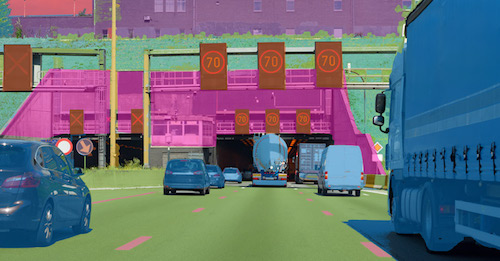MATLAB Dives Into Deep Learning

MATLAB release 2018b features the Deep Learning Toolbox, which delivers a framework for designing and implementing deep neural networks. Image Courtesy of © 1984–2018 The MathWorks, Inc.
September 24, 2018
Machine learning and artificial intelligence are fast becoming an integral fixture in modern-day products and applications, but the disciplines are still highly complex and not a core domain expertise area for many design engineers.
To make this critical discipline more accessible to non-specialist engineers, MathWorks has released significant deep learning enhancements in its latest Release 2018b of MATLAB and Simulink, providing a new framework for designing and implementing deep neural networks and bolstering engineering teams’ AI development capabilities.
Key to the release is the Deep Learning Toolbox, which replaces the Neural Network Toolbox. The new addition is used to train deep learning networks for classification, regression, and feature learning on image, time-series, and text data, making it a core tool for computer vision, signal processing, and image processing applications. Deep learning and AI have come to the fore in all kinds of systems and engineering applications given the huge amounts of data now being collected from the web and Internet of Things (IoT), and the increasing availability and deployment of GPUs, according to Jim Tung, MathWorks Fellow.
“More and more systems rely on object recognition in imaging and vision, whether you’re talking about computer vision for security purposes, robotics through things like cameras, or autonomous vehicles, which rely on perception through cameras and Lidar,” he explains. “It’s all about perception and identifying objects in patterns of data, and deep learning has proven to be an accurate and fast way to meet the needs of these applications.”
One of the key differences between MathWorks’ approach to deep learning and those of competitors is its support the ONNX community, which ensures interoperability with other frameworks. The ONNX converter in MATLAB R2018b allows engineers to import and export models from supported frameworks such as PyTorch, MxNet, and TensorFlow—a workflow that ensures models trained in MATLAB can be used in other frameworks.
“One of the challenges has been [deep learning] frameworks packaged up in silos,” Tung explains. “Companies provide frameworks of their own for designing and deploying deep networks, but they haven’t been interoperable or easy to use.”
The Deep Network Designer app is the other big improvement that makes deep learning more accessible. The tool employs a drag-and-drop approach, allowing engineers to build, visualize, and edit deep learning networks, including creating complex network architectures and modifying complex pre-trained networks for transfer learning.
Other capabilities of the new release include the MATLAB Deep Learning Container, which supports the NVIDIA GPU Cloud for additional performance beyond desktop capabilities, and additional reference architectures for Amazon Web Services and Microsoft Azure. There are also domain-specific workflows, including ground-truth labeling apps for audio, video, and application-specific data stores—all essential for making it easier and faster to work with large data collections.
This video provides more detail on MATLAB’s deep learning roots.
Subscribe to our FREE magazine, FREE email newsletters or both!
About the Author
Beth Stackpole is a contributing editor to Digital Engineering. Send e-mail about this article to [email protected].
Follow DE





